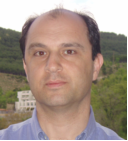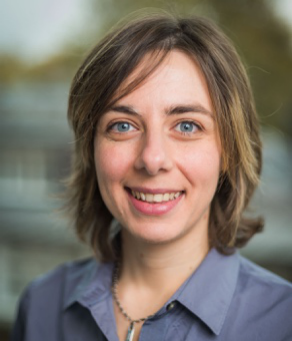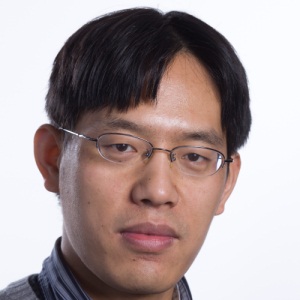Speaker 2020
Keynote Speaker I
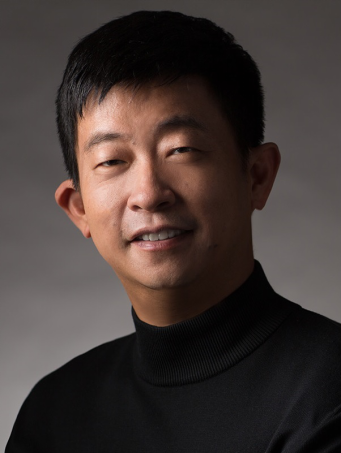
Prof. Zhu Han,
IEEE fellow, John and Rebecca Moores Professor
ECE Department and CS Department, University of Houston, USA
Title: Big Data Analysis and Cross-Layer Optimization for Communication, Caching and Computing Network
Abstract: The recent advances of computing, caching, and communication (C^3) can have significant impacts on the future network design. In addition, there are many new technologies for big data analysis and cross-layer optimization. In this talk, we limit our scope to three specific cases, while want to give insights. First, a new formulation for bandwidth allocation and routing problem is formulated for wireless network virtualization, and the decomposition algorithms are constructed using the alternating direction method of multipliers that can be implemented in a parallel and distributed fashion. Second, the caching based D2D communication scheme is investigated by taking social ties among users and common interests into consideration, and the hypergraph and matching frameworks are employed for optimization. Third, we consider mobile social networks together with C^3 networks using deep learning to study social networks and a novel deep reinforcement learning approach to automatically make a decision for optimally allocating the network resources.
Bio.: Zhu Han received the B.S. degree in electronic engineering from Tsinghua University, in 1997, and the M.S. and Ph.D. degrees in electrical engineering from the University of Maryland, College Park, in 1999 and 2003, respectively. From 2000 to 2002, he was an R&D Engineer of JDSU, Germantown, Maryland. From 2003 to 2006, he was a Research Associate at the University of Maryland. From 2006 to 2008, he was an assistant professor in Boise State University, Idaho. Currently, he is a John and Rebecca Moores Professor in Electrical and Computer Engineering Department as well as Computer Science Department at University of Houston, Texas. His research interests include security, wireless resource allocation and management, wireless communication and networking, game theory, and wireless multimedia. Dr. Han is an NSF CAREER award recipient 2010. Dr. Han has several IEEE conference best paper awards, and winner of 2011 IEEE Fred W. Ellersick Prize, 2015 EURASIP Best Paper Award for the Journal on Advances in Signal Processing and 2016 IEEE Leonard G. Abraham Prize in the field of Communication Systems (Best Paper Award for IEEE Journal on Selected Areas on Communications). Dr. Han has been IEEE fellow since 2014, AAAS fellow since 2020 and IEEE Distinguished Lecturer from 2015 to 2018. Dr. Han is 1% highly cited researcher according to Web of Science since 2017.
Keynote Speaker II
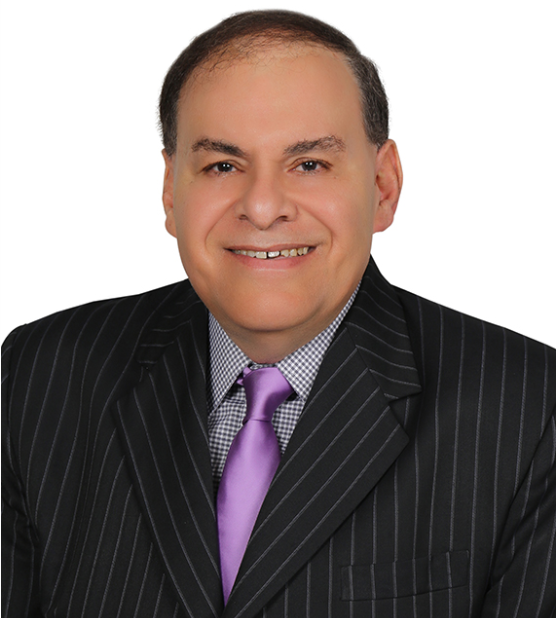
Prof. Mohammed Ismail
Professor and Chair of ECE at Wayne State University, Detroit, USA
Fellow IEEE, Adjunct professor with KUSTAR, Abu Dhabi, UA
Title: A Self-powered IoT SoC Platform for Wearable Health Care
Abstract: This talk will focus on an IoT Systems-on-Chip (SoCs) as part of research work which targets applications in self-powered chip sets for use in public health, ambient intelligence, safety and security and IoT.
One such application, which we will discuss in details, is a ground breaking self-powered IoT SoC platform for wearable health care. More specifically we will present a novel fully integrated ECG signal processing system for the prediction of ventricular arrhythmia using a unique set of ECG features extracted from two consecutive cardiac cycles. Two databases of the heart signal recordings from the American Heart Association (AHA) and the MIT PhysioNet were used as training, test and validation sets to evaluate the performance of the proposed system. The system achieved an accuracy of 99%. The ECG signal is sensed using a flexible, dry, Graphene-based technology and the system is powered up by harvesting human thermal energy. The system architecture is implemented in Global foundries’ 65 nm CMOS process, occupies 0.112 mm2 and consumes 2.78 micro Watt at an operating frequency of10 KHz and from a supply voltage of 1.2V. To our knowledge, this is the first SoC implementation of an ECG-based processor that is capable of predicting ventricular arrhythmia hours before the onset and with an accuracy of 99%.
Bio: Mohammed Ismail a prolific author and entrepreneur in the field of chip design/test and nanotechnology, spent over 25 years in academia and industry in the US and Europe He obtained his BS and MS from Cairo University, Egypt and His PhD from the University of Manitoba, Canada in 1983, all in electrical engineering.
He is the Founder of the Ohio State University's (OSU) Analog VLSI Lab, one of the foremost research entities in the field of nano electronics , analog, mixed signal and RF integrated circuits and served as its Director. He also served on the Faculty of OSU's ElectroScience Lab. He held a Research Chair on nano electronics circuits at the Swedish Royal Institute of Technology (KTH) where he founded the RaMSiS (Radio and Mixed Signal Integrated Systems) Research Group there. He had visiting appointments in Finland (Aalto University), Norway (NTH and University of Oslo), the Netherlands (Twente University) and Japan (Tokyo Institute of Technology).
He Joined KUSTAR, the UAE in 2011, where he holds the ATIC (now Mubadala Technology) Professor Chair and is Founding Chair of the ECE Department. He is the Founding Director of the Khalifa Semiconductor Research Center (KSRC) and Co-Director of the ATIC-SRC Center of Excellence on Energy Efficient Electronic Systems (ACE4S) targeting self-powered nanoscale chip sets for wireless sensing and monitoring, bio chips and power management solutions. His current research focuses on CMOS RF and mm-wave ICs , energy harvesting and power management, wearable Biochips and Systems on Chip ( SoCs) for the Internet of Things ( IoTs) and smart self-driving vehicles. He joined Wayne State University in Detroit, MI as professor and Chair of ECE while maintaining his position at KUSTAR as an Adjunct.
He led a research team that developed the first CMOS combo 802.11a/b/g Wi-Fi Radio chip which was commercialized. More recently He developed with his colleagues the world first self-powered wearable device that predicts the onset of a heart attack long before it happens and is currently in the process of commercializing it in partnership with the Cleveland Clinic, a world leading hospital in cardiology.
Dr. Ismail served as a Corporate Consultant to over 30 companies worldwide and is a Co-Founder of Micrys Inc., Columbus, Ohio, Spirea AB, Stockholm, Firstpass Technologies Inc., Dublin, Ohio and ANACAD-Egypt (now part of Mentor Graphics and Siemens). He advised the work of over 54 Ph.D. students and of over 100 M.S. students. He authored or co-authored over 20 books and over 170 journal publications, 300 conference papers and has 15 US patents granted and several pending.
He is the Founding Editor of the Springer Journal of Analog Integrated Circuits and Signal Processing and serves as the Journal's Editor-in-Chief. He served the IEEE in many editorial and administrative capacities. He is the Founder of the IEEE International Conference on Electronics, Circuits and Systems (ICECS), the flagship Region 8 Conference of the IEEE Circuits and Systems Society and a Co-Founder of the IEEE International Symposium on Quality Electronic Design (ISQED). He received the US Presidential Young Investigator Award from the White House, the Ohio State Lumley Research Award four times, in 1992, 1997, 2002 and 2007 and the US Semiconductor Research Corporation's Inventor Recognition Award twice as well as several best paper awards. More recently he received the 2018 UNESCO Medal for Contributions to NanoScience and the SRC Board of Directors Special Recognition for Leadership in Semiconductor Research in the UAE. He is a Fellow of IEEE.
.
Keynote Speaker III
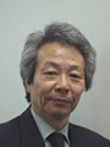
Prof. Koichi Asatani
IEEE Fellow, IEICE Fellow
Professor, Shanghai University, Professor Emeritus, Kogakuin University
Title: Trends and Challenges for 5G and 6G Networking
Abstract: 5G is now being deployed in many countries. The new connected end points of communication networks will play key roles in 5G era, such as autonomous vehicles, various smart sensors and IoT, as well as the enhanced Internet and any other existing communications devices. Various research initiatives have started in academia, industry, and standard bodies have started toward 6G mobile wireless networks.
This talk reviews trends in Global ICT and describes 5G architecture and use cases, and then addresses possible technical pillars of 6G, which are enhanced 5G technologies and/or new technologies possibly to be adopted in 6G. It also discusses the issues and challenges in realization and in deployment as an infrastructure.
Bio: Koichi Asatani received his B.E.E.E., M.E.E.E. and Ph. D. degrees from Kyoto University in 1969, 1971 and 1974, respectively. From 1974 to 1997, Dr. Asatani was with NTT and engaged in R&D on optical fiber communication systems, hi-definition video transmission systems, FTTH, ISDN, B-ISDN, ATM networks, IP Networks and their strategic planning. From 1997 to 2014, he served as Professor at Kogakuin University. From 1999 to 2012, he joined Graduate School of Global Information and Telecommunication, Waseda University as Visiting Professor. He is currently Chair Professor, Nankai University, Tianjin, China. He is also Professor Emeritus, Kogakuin University. He is Fellow of IEEE and Fellow of IEICE. He was appointed as Distinguished Lecturer of IEEE Communications Society for 2006-2009, 2011-2012, and 2013-2014.
He is a founder of Communications QoS, Reliability and Performance Modeling series symposium at IEEE ICCs and IEEE Globecoms. He served as co-chair for this symposium at ICCs and Globecoms for 2002-2004. He is Ex-Chair and Advisory Board Member of IEEE Technical Committee on Communication Quality and Reliability (CQR-TC), Feature Editor on Standards (1993-1999), Senior Technical Editor (1999-2005) of IEEE Communications Magazine. He also served as Executive Chair, ICC2011 in Kyoto. From 1988 through 2000, he served as Vice-Chairman of ITU-T SG 13 (formerly CCITT SG XVIII), responsible for digital networks including GII, IP networks, NGN and Future Networks. He served as Chair for National Committee on Next Generation Networks in Japan. He also served as Chair, R&D and Standardizations Working Group, Next Generation IP Network Promotion Forum. He served as IEEE Communications Society Director, Membership Programs Development for 2014-2015 term. He is currently Chair, IEEE Com Soc GIMS committee. He has been serving as a Board member, IEICE, and Chair, IEICE Standards Activities since 2014.
He has published more than fifty papers, authored/co-authored nineteen books, and gave more than 120 talks including keynotes and invited talks at the prestigious international conferences such as IEEE ICC and Globecom.
His current interests include Information Networks including Broadband networking, Internet Interworking, IP telephony, NGN, Future Networks, IoT, 5G Networking and their QoS aspects.
Keynote Speaker IV
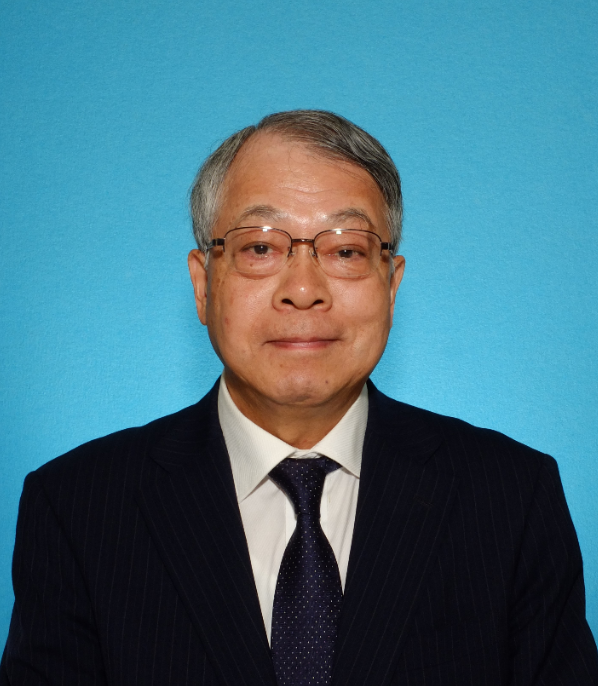
Dr. Hiroo Wakaumi
Tokyo Metropolitan College of Industrial Technology, Japan
Title: Analog Signal Processing Techniques for Low-Power IoT Sensing Devices
Abstract: Sensing device technology, which is the key to realizing the IoT (Internet of Things) system, is increasingly becoming important. A Switched-Capacitor (SC) technology using CMOS OP Amplifiers is promising for realizing analog video signal processors in IoT sensing devices. This is due to the easy integration in monolithic ICs using the CMOS technology and the possible operation at high speed. In SC filter ICs, the realization of low power consumption OP Amps is an important matter to avoid unstable operation.
In this talk, power consumption reduction techniques of OP Amps are discussed. At first, some conventional OP Amp circuits for reducing power consumption are introduced. To solve the low speed operation and high power consumption problems in these circuits, the 3-V power Low-Voltage Folded-Cascode (LV FC) OP Amp with a Dynamic Switching Bias (DSB) circuit proposed by the lecturer will be presented. This is capable of attaining high gain even at low power supply voltages and operating at a high switching speed covering video signal bandwidths. Then, as applications of this DSBFC OP Amp, a 4th-order SC Low-Pass Filter (LPF) operating at a switching frequency of 14.3 MHz, will be shown in theory and concrete configuration and the usefulness of a high-order SC LPF for realizing suitable roll-off filter characteristics be made clear. A high-speed multiple-channel Double-DSBFC OP Amp (DDSB OP Amp) with a fast settling time while keeping a low distortion will be also proposed. The DDSB SC LPF using this DDSB OP Amp, which enables a high attenuation in a wide stop-band due to the high speed settling and the small feed-through in sampling/CMOS switches, will be proposed subsequently. Simulation results show that the practicable stop-band attenuation below -41 dB in the DDSB SC LPF was obtained.
In conclusion, the lecturer will state that the low power consumption techniques using the DSB circuit such as the DDSB OP Amp should come to be important as analog signal processing circuits in IoT Sensing devices.
Bio: Dr. Hiroo Wakaumi received his B.E. degree in Electronics from Chiba University in 1973 and his Ph.D. degree in Electrical Engineering from Tokyo Metropolitan University in 2000. Until 1992, he worked at NEC Corporation. Then he joined Tokyo Metropolitan College of Technology, whose name has been changed to Tokyo Metropolitan College of Industrial Technology in 2006, where he served as a professor from 2002 until 2015. He is currently a part-time lecturer there. He is a researcher with over 47 years of experience and a teacher with over 28 years of experience. His research interests include CCDs, display devices, high-voltage MOS ICs, magnetic sensing, optical sensing, and signal processing.
He has been working as a reviewer of one e-Book, 7 journals and 26 international conferences from 2000 until now. He served as a co-chair of all sessions in the international conference ICTASI 2018 and as a session chairman in eight international conferences from 2002 until 2018. He is now serving as a local chair for ISCNC 2020 and as a local liaison for IWoSR 2020.
He was awarded the Best Paper Award of the 2019 International Conference of Electrical and Electronics Engineering in WCE 2019, the Best Invited Paper Award at the international conference CIM’07, and the Industrial Education Achievement Award from the Industrial Education Advancement Association of Japan in 2013. He has published 60 peer-reviewed papers in journals and international conferences, five books, and 83 general meeting papers including bulletins and magazines, achieving superior performance related to ICs and magnetic sensing and optical sensing/displaying systems. He served as a keynote speaker in ICTASI 2018 and an editorial advisory board member of a book in 2013. He is now each senior member of IEEE and IEICE, and is also technical program committee members of many International Conferences (APCCAS, ISCAS, ICTASI, SENSORDEVICES, ICEECC etc.). He is a trustee of the Japan Society of Applied Quantum Chromo-dynamics as well.
Keynote Speaker V
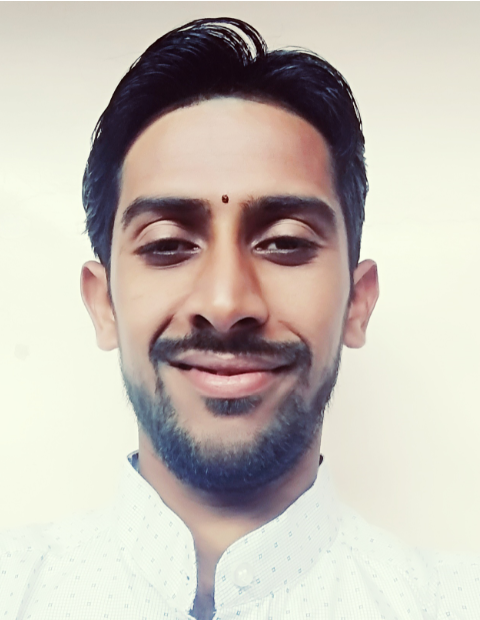
Prof. Ajay B Gadicha
Sant Gadge Baba Amravati University. India
Title: Phenomenon of Detection of Shot Frontiers & Feature Extraction from Video Data.
Abstract: During the last decades, a continuous demand and creation of digital video information have occurred. The creation of digital video has caused an exponential growth of digital video content. To increase the usability of such large volume of videos, a lot of research has been made. Video Summarization, in particular, has been proposed to rapidly browse large video collections. It has also been used to efficiently index and access video content.
To summarize any type of video, researchers have relied on visual features contained in frames. In order to extract these features, different techniques have used local or global descriptors. Nonetheless, no extensive evaluation has been made about the usefulness of both types of descriptors in video summarization.
One important contribution of this research is to propose a method for analyzing and identifying the features extraction of each frame and apply semantic video summarization and scene classifier that not only produce meaningful and informative video summaries but it generates the fruitful results.
Bio: Prof. Ajay B Gadicha currently working as Assistant Professor in P.R.Pote College of Engineering and Management Amravati. He becomes First Merit & University Topper in Master of Engineering in Information Technology in2011. He has completed PhD in Computer Science and Engineering from Sant Gadge Baba Amravati University. He has 10 years of experience in the field of Computer Forensics and Information Technology. He has published 66 research papers in National and International conferences & journals. He has publish 2 books (online) and 10 patents filled in the field of Electrical /Electronics and Machine Learning. He has field of interest in Video Forensics, Network Security, Image Processing, Video Summarization.
Dr. Gadicha working in 160 editorial and reviewer boards of various national and international bodies & communities including ISTE, CSI ,IAENG,IEEE,ACM,IFERP etc.
Dr. Gadicha received International Association for Science and Technology Education Awarded “Best Young Research Award-2017” at Tamil Nadu.
Dr. Gadicha Received “Best Researcher Award-2019” by Vivekanandha College of Arts and Science for Women (Autonomous), Tiruchengode, Tamil Nadu, India.
Dr. Gadicha Received “Young Researcher in Computer Science and Engineering on 31 July 2019” by Global Outreach Research & Education Association Bangalore.
| Prof. Yannis Manolopoulos Faculty of Pure & Applied Sciences, Open University of Cyprus, Cyprus |
| Dr. Federica Sarro Department of Computer Science, University College London, UK |
| Prof. Shujun Li School of Computing, University of Kent, UK |

